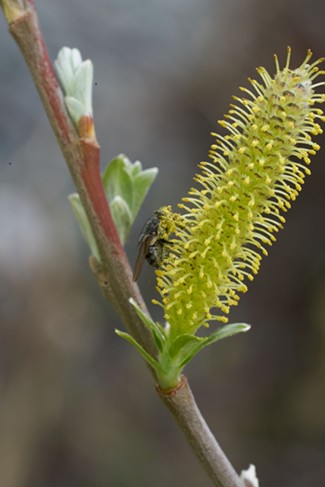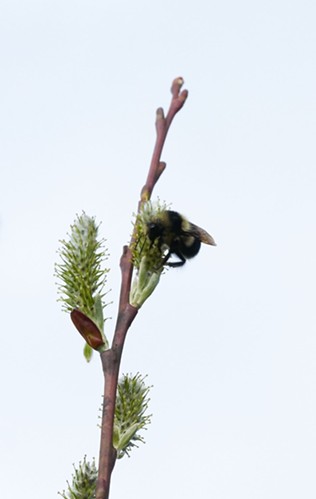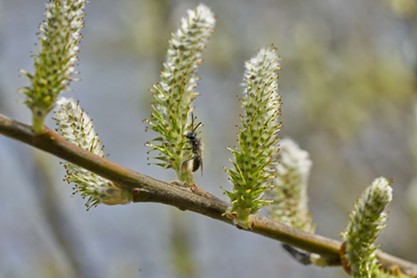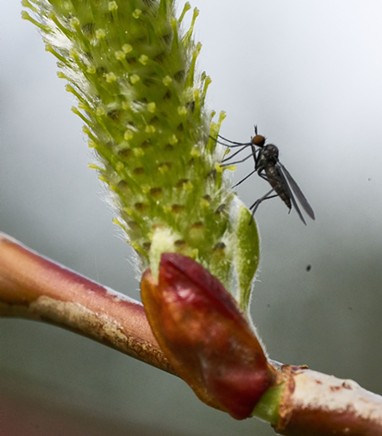News Blog

- Anthony Westkamper
- A tiny fly using its long mouth parts to gather nectar from a pussy willow.

- Anthony Westkamper
- A bumblebee on a pussy willow branch.
Near the end of the trail, out in the open, something buzzed furiously around me three or four times then headed off. From the quick glimpse I got I knew it was a bumblebee. It headed for a big pussy-willow about 50 meters upstream. Against the subdued damp earth tones of the river bank, dark overcast sky and somber evergreens, the yellow green of their catkins stood in sharp contrast, beckoning nectar and pollen feeders.

- Anthony Westkamper
- A teensy wasp gets in on the pollinating.
It was busy despite the cold. Insects were there in numbers. I started taking pictures and realized except for a couple of tiny bees they were all flies of one sort or another. Members of the order Diptera they are unique among the orders of insects in having only two wings instead of four. In my opinion it is the most diverse order. They fill the same niches as most of the other orders from parasites and hunters to, in this case, nectar feeders, which provide pollination services to a great many flowering plants. My college entomology professor did his thesis on pollinators of the wildflower Clarkia. To everyone's surprise, the majority of insects to visit the flowers he monitored were various species of flies. It may be true for willows as well.

- Anthony Westkamper
- A black fly pollinating on the same plant.


Comments